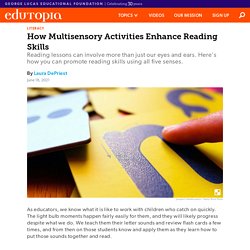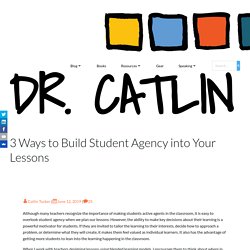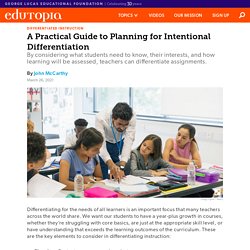

How Multisensory Activities Enhance Reading Skills for Pre-K and Early Elementary Students. As educators, we know what it is like to work with children who catch on quickly.

The light bulb moments happen fairly easily for them, and they will likely progress despite what we do. We teach them their letter sounds and review flash cards a few times, and from then on those students know and apply them as they learn how to put those sounds together and read. Try Adapting Your Literacy Teaching Methods What can be done for children who are taught those same letter sounds, have seen those same flash cards countless times, and still can’t remember which letter makes which sound?
Homeworkchoiceboard. The Value of Inclusive Education - Open Society Foundations. Around the world, children are excluded from schools where they belong because of disability, race, language, religion, gender, and poverty.

But every child has the right to be supported by their parents and community to grow, learn, and develop in the early years, and, upon reaching school age, to go to school and be welcomed and included by teachers and peers alike. When all children, regardless of their differences, are educated together, everyone benefits—this is the cornerstone of inclusive education.
What is Student Agency? The term student agency relates to the student having an active role in their learning through voice, and often a choice, in the process.

Project and problem-based learning provide opportunities to increase student agency through activities that are interesting and relevant to the learner. When the student has agency, the student is making, creating, doing, sharing, collaborating, and publishing in ways that are meaningful to them. Learning experiences that engage and promote student agency often have many of the following qualities: Passion Igniting student passion is something that teachers know to be effective. Student Agency: What Do Students Want to Create to Demonstrate Their Learning? – Dr. Catlin Tucker. In my blog post titled “3 Ways to Build Student Agency into Your Lessons,” I encouraged teachers to design lessons that allow students to make key decisions about their learning.

Student agency is one of the easiest ways that teachers can begin to personalize learning. If students are invited to make decisions about the subject or topic they focus on, how they complete a task, or what they produce to demonstrate their learning, the learning path and products will be different for individual students. In addition to personalizing learning, giving students agency is a powerful motivator. 3 Ways to Build Student Agency into Your Lessons – Dr. Catlin Tucker.
Although many teachers recognize the importance of making students active agents in the classroom, it is easy to overlook student agency when we plan our lessons.

However, the ability to make key decisions about their learning is a powerful motivator for students. If they are invited to tailor the learning to their interests, decide how to approach a problem, or determine what they will create, it makes them feel valued as individual learners. It also has the advantage of getting more students to lean into the learning happening in the classroom. Differentiation Made Easy. Some thoughts on embedded differentiation. A couple of weeks ago, a mfltwitterati member, asked for advice on blogs about differentiation in MFL.

Different lovely members of the mfltwitterati community suggested great publications and it made reflect on the issue of differentiation. I have the same high expectations for all my pupils, regardless of their ability. What I provide is different levels of support and scaffolding, embedded in all lessons, which guide my students through their individual learning journey. The anchor effect. How Universal Design for Learning Can Help K-12 Teachers With Lesson Planning This Year. Even when we teach with consistent, planned strategies, every student experiences instruction in a different way.

When we embrace that diversity of experience among our students and recognize that what works for some may not work for others, doors open: We can plan multiple routes for engagement, representation, and expression, which enables more students to succeed. Universal Design for Learning (UDL) is an education framework that helps teachers support students across that span of the student experience. It is universal in that it can apply to every student and to every element of education, from inquiry-based learning approaches to classroom inclusion to assessment. Applying the core concepts of UDL can be particularly helpful to teachers toggling back and forth among in-person, remote, and/or hybrid setups.
Build Outward From the Most Essential Idea. A Practical Guide to Planning for Intentional Differentiation. Differentiating for the needs of all learners is an important focus that many teachers across the world share.

We want our students to have a year-plus growth in courses, whether they’re struggling with core basics, are just at the appropriate skill level, or have understanding that exceeds the learning outcomes of the curriculum. These are the key elements to consider in differentiating instruction: Planning: Content, processes, and products Learner access: Readiness, interests, and learning preferences Environment Much has been written to help teachers think about and provide differentiated experiences for learners that align and explain these elements. However, the question and challenge that I hear and observe from teachers most often is: how do we effectively plan intentional differentiation that we can implement and evaluate with the same confidence and understanding as traditional lessons?